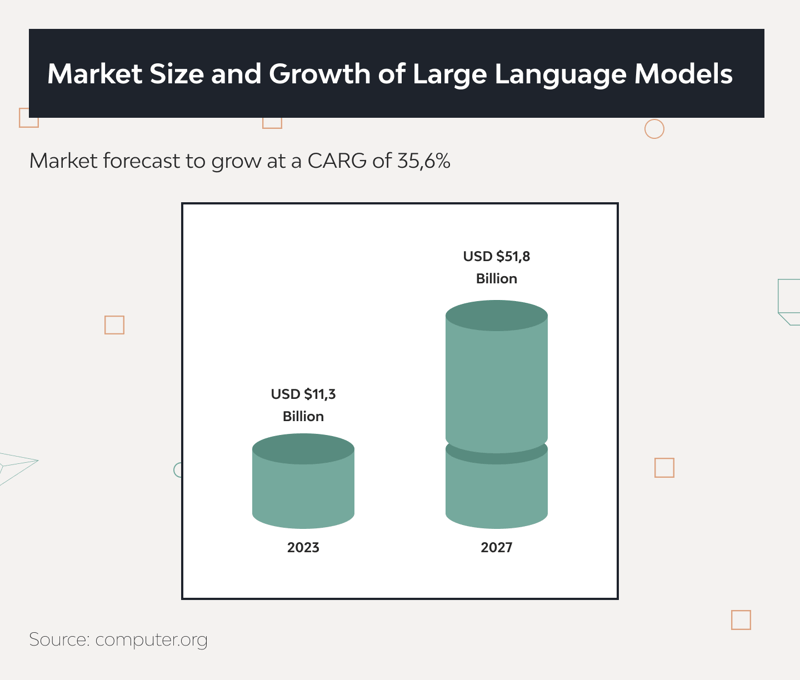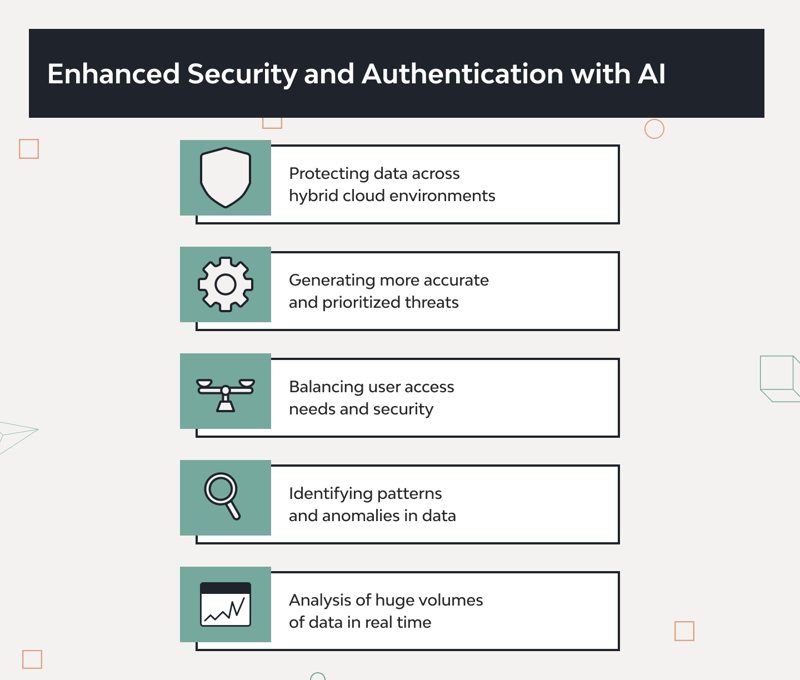Top 7 Conversational AI Trends for 2024

Django Stars
Posted on March 6, 2024
By the end of 2023, AI became a lot more than a buzzword for business and tech enthusiasts, since it proved its efficiency in nearly any realm of business. The speculation about whether to introduce AI to business processes at all transformed into more substantial questions of where to employ it and what steps to take for smooth onboarding of the technology.
As the technology of conversational AI has established its place in many business modes, let’s discuss the most recent trends to do with it and how businesses can foresee and use these to their advantage.
Trend 1: Advancements in Natural Language Understanding (NLU)
NLU, a subfield of AI, is growing more capable of understanding the meaning and context of language in prompts thus giving more precise and personalized outputs. In this regard, conversational AI models are set to get more sensitive to nuances and acquire even more inherently “human” traits in their interaction with users. For businesses, this development means a chance to interact with their customers more intuitively and effectively at an optimized cost.
Future NLU systems are expected to show deeper contextual understanding, thus ensuring context-aware engagements with users.
Trend 2: Increased Integration with IoT Devices
Another advance in AI trends for 2024 is that it will make smart devices even smarter, as it also becomes a part of IoT. More elaborate and context-aware AI algorithms allow machinery and smart devices to communicate and make decisions without human intervention. This trend means an opportunity for businesses to automate operations at a reduced cost.
The AI-powered IoT makes it even easier for businesses to collect and analyze data in real-time and introduce more informed decision-making without involving much human effort. The current shifts in AI and IoT integration promise to revolutionize industries, from healthcare to manufacturing, by offering unprecedented levels of automation and insight.
IoT and AI-powered IoT process: AI facilitates more nuanced data collection and thus facilitates more customized outputs
Trend 3: Personalization Through AI
The more sensitive and context-aware AI becomes, the more personalized experience it can deliver to its users. Based on the available capabilities of the algorithm, AI can scale creativity and strategy, as it can tell what consumers truly desire. AI-powered personalization involves analyzing vast amounts of customer data to segment audiences and serve them with relevant content. However, this process goes beyond simple segmentation: it is headed toward hyper-personalization in real-time, based on demographics, purchasing history, and social media behavior.
This kind of personalization enhances customer engagement and increases sales. It can tailor the experience with the brand to one’s behaviors, preferences, and needs. Thus, IA-powered customer experience provides a more profound understanding of a business’s customers as well as tools to approach them effectively.
Trend 4: Expansion in Multilingual Capabilities
The tools AI provides for businesses remove another barrier toward globalization and expansion, namely, the linguistic one. Businesses with AI solutions up their sleeves have everything necessary for cross-cultural communication with multilingual text generation capabilities. It is now easier for companies to open up new global markets and reach a broader audience regardless of diverse linguistic backgrounds.
Trend 5: Conversational AI in Employee Training and HR
Marketing efforts and customer experience are not the only domains revolutionized by AI. Chatbots and virtual assistants aid in automating routine HR tasks. It is now easier to provide new employees with instant responses to their queries and tailor their personalized learning experiences for onboarding or corporate training programs. This technology promises streamlined HR processes, better employee engagement, and improved training outcomes for businesses. In the future, AI is about to transform the way organizations manage and develop their most valuable asset, their people.
Trend 6: Enhanced Security and Authentication
The development of security technology is always in competition with one for breaching security, which is why AI may be employed for both. Thus, it is actively used in improving security protocols and scenarios. AI can identify patterns in user behavior based on massive amounts of data, detect anomalies quickly, and enhance biometric verification processes.
For businesses, it presents prospects for improved data protection, reduced risk of breaches, and increased trust from customers. With the help of AI, organizations can create a safer digital environment for their internal processes and build reliable business operations.
Trend 7: Ethical and Responsible AI Usage
The concerns for ethical and responsible usage emerge as a crucial trend along with the evolution of AI capabilities. AI’s development is faster than the development of legislations that regulate it, which explains why it will be a challenge in the future. For businesses, this trend comes with the need to foster trust among users, mitigate legal risks, and enhance brand reputation.
Thus, companies developing and dealing with AI have established their ethical frameworks for effective yet ecological use of the technology.
The future of artificial AI: narrower targeting & broader reach
Regarding the current capabilities of artificial intelligence, it will continue to progress in terms of personalization and segmentation for customer experience, scaling opportunities for organizations, and expansion of its current potential across departments within an organization.
Hyper-Personalization Opportunities
As NLU technology improves, AI will gain a deeper comprehension of human language, contexts of interactions, and nuances of user intents. Another ongoing trend hinting at this tendency is the integration of AI with IoT devices: this technology both provides more insights about user behavior and facilitates personalized experiences across various platforms and devices. Thus, it gives businesses tools to provide more personalized interactions and elevate customer experience, as they can learn more about their customers and provide them with human-like services while saving on staff.
Easier Scaling and Expansion
With the opportunities provided by AI, businesses will expand faster. AI-powered automation can help companies can manage large volumes of customer interactions efficiently, reducing operational costs and improving response times. Plus, the multilingual capabilities of AI will break down language barriers, making it easier for companies to expand their reach globally. Thus, it will be a huge factor for businesses to scale up and expand their operations seamlessly and effectively.
More Automation in Existing Processes
Apart from kickstarting industries and AI-based products or services, this technology will continue improving existing processes within companies. Beyond customer service and sales, AI improves internal communications, employee training, and data analysis. As it gives space for automating routine tasks and providing valuable insights, conversational AI can enhance productivity in strategic or intellectually challenging tasks as well. Its versatility will provide organizations with even more innovative solutions to meet their evolving needs.
The top trends in conversational AI show that this technology is here to stay. In 2024, it is set to improve its current capabilities in terms of precision, nuance, and data handling. Plus, its current capabilities will expand across industries and departments that used to rely on manual labor or analog technologies.

Posted on March 6, 2024
Join Our Newsletter. No Spam, Only the good stuff.
Sign up to receive the latest update from our blog.


